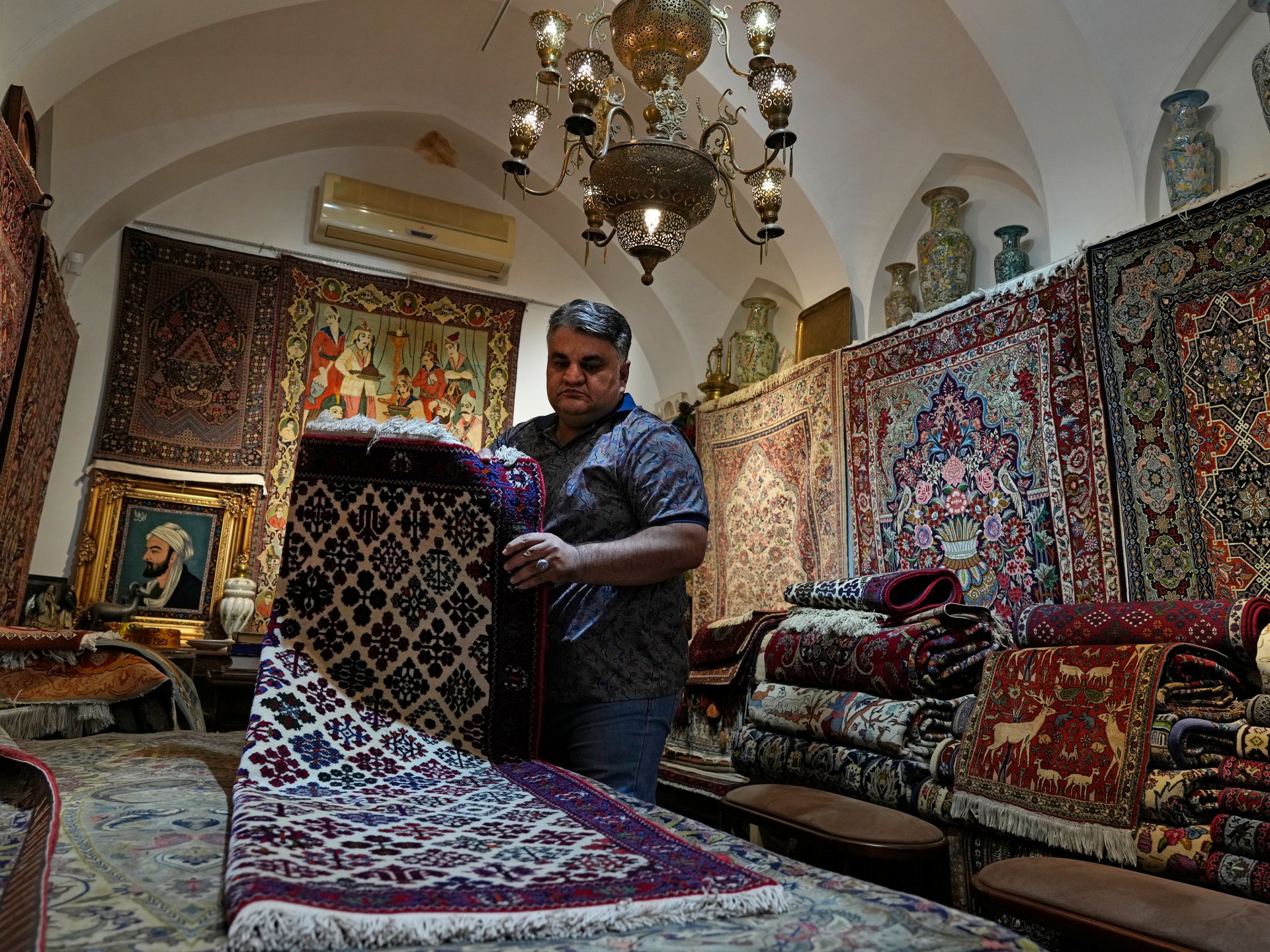
Iran’s unravelling carpet sales
Al Jazeera
Sanctions and a hobbled economy pull the rug out from under Iran’s traditional carpet weavers.
The historic Kashan bazaar in central Iran once sat on a major caravan route, its silk carpets known the world over. But for the weavers trying to sell their rugs under its ancient arches, their world has only unravelled since the collapse of Iran’s nuclear deal with world powers and wider tensions with the West.
Carpet exports, which exceeded $2bn two decades ago, have plummeted to less than $50m in the last year, according to government customs figures. With fewer tourists and increasing difficulties in making international transactions, Iranian rugs are going unsold as some weavers work for as little as $4 a day.
Kashan’s carpet-weaving industry has been listed as an “intangible cultural heritage” by the United Nations Educational, Scientific and Cultural Organization (UNESCO).
Many of the weavers are women, with the skills needed for the Farsi weaving style passed down from generation to generation, using materials such as vine leaves as well as pomegranate skins and walnuts to make the dyes for their threads. A single rug can take months to make.
After the 1979 Islamic Revolution, the United States increased sanctions on Iran’s government over the siege on the US embassy on November 4, 1979 and other issues.





















 Run 3 Space | Play Space Running Game
Run 3 Space | Play Space Running Game Traffic Jam 3D | Online Racing Game
Traffic Jam 3D | Online Racing Game Duck Hunt | Play Old Classic Game
Duck Hunt | Play Old Classic Game